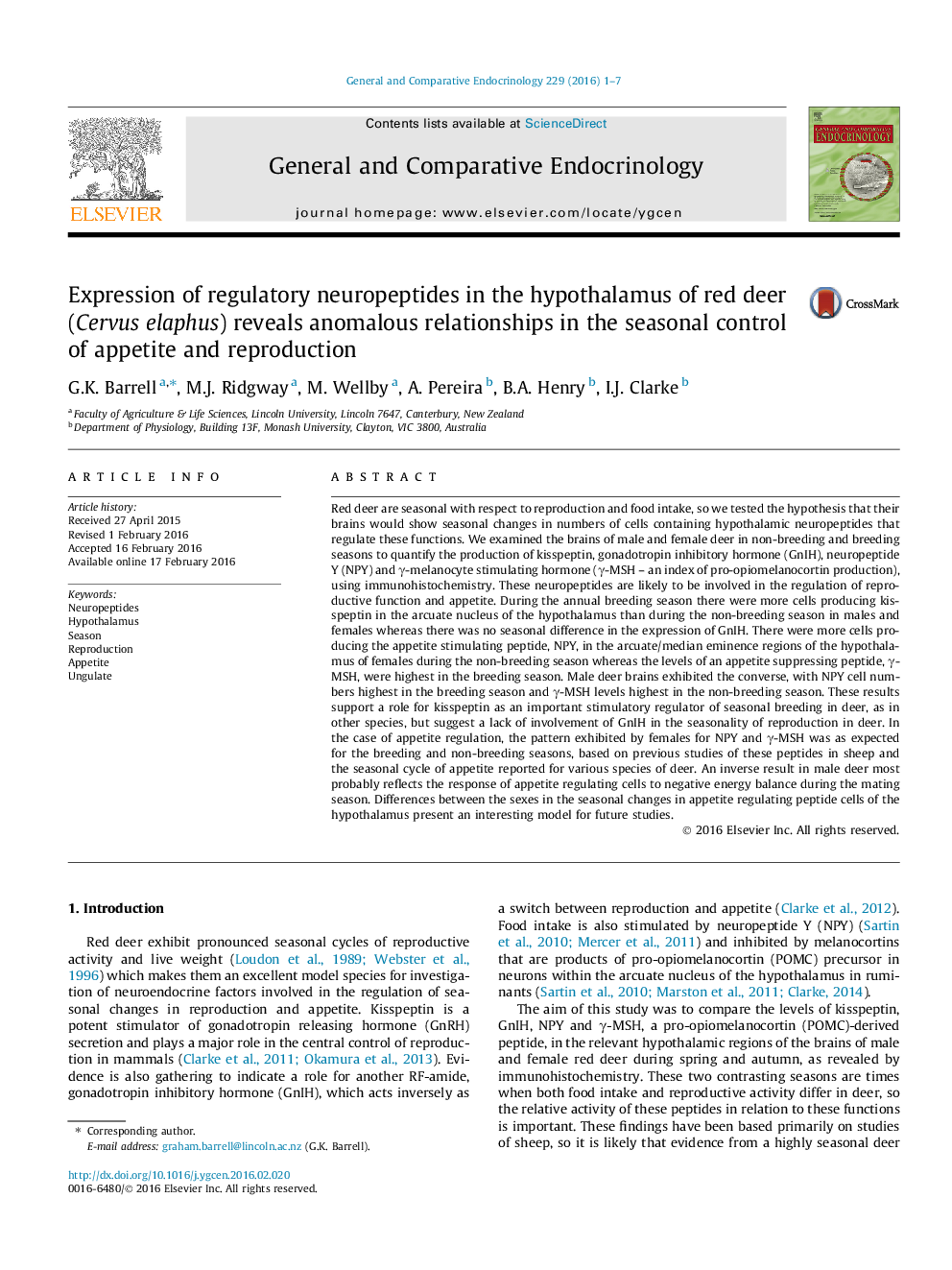| کد مقاله | کد نشریه | سال انتشار | مقاله انگلیسی | نسخه تمام متن |
|---|---|---|---|---|
| 2799835 | 1568877 | 2016 | 7 صفحه PDF | دانلود رایگان |

• We used immunochemistry to examine hypothalami of red deer for neuropeptides.
• Kisspeptin-containing cells were positively associated with the breeding season.
• GnIH immunoreactivity did not differ between seasons.
• In females NPY was highest and POMC cells lowest in the non-breeding season.
• Males displayed the converse pattern for these appetite-regulating peptides.
Red deer are seasonal with respect to reproduction and food intake, so we tested the hypothesis that their brains would show seasonal changes in numbers of cells containing hypothalamic neuropeptides that regulate these functions. We examined the brains of male and female deer in non-breeding and breeding seasons to quantify the production of kisspeptin, gonadotropin inhibitory hormone (GnIH), neuropeptide Y (NPY) and γ-melanocyte stimulating hormone (γ-MSH – an index of pro-opiomelanocortin production), using immunohistochemistry. These neuropeptides are likely to be involved in the regulation of reproductive function and appetite. During the annual breeding season there were more cells producing kisspeptin in the arcuate nucleus of the hypothalamus than during the non-breeding season in males and females whereas there was no seasonal difference in the expression of GnIH. There were more cells producing the appetite stimulating peptide, NPY, in the arcuate/median eminence regions of the hypothalamus of females during the non-breeding season whereas the levels of an appetite suppressing peptide, γ-MSH, were highest in the breeding season. Male deer brains exhibited the converse, with NPY cell numbers highest in the breeding season and γ-MSH levels highest in the non-breeding season. These results support a role for kisspeptin as an important stimulatory regulator of seasonal breeding in deer, as in other species, but suggest a lack of involvement of GnIH in the seasonality of reproduction in deer. In the case of appetite regulation, the pattern exhibited by females for NPY and γ-MSH was as expected for the breeding and non-breeding seasons, based on previous studies of these peptides in sheep and the seasonal cycle of appetite reported for various species of deer. An inverse result in male deer most probably reflects the response of appetite regulating cells to negative energy balance during the mating season. Differences between the sexes in the seasonal changes in appetite regulating peptide cells of the hypothalamus present an interesting model for future studies.
Journal: General and Comparative Endocrinology - Volume 229, 1 April 2016, Pages 1–7